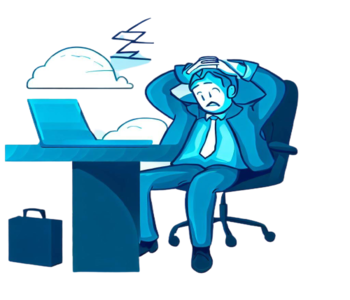Physical and Emotional Exhaustion:
Employees may feel drained, lack energy, and experience frequent physical issues such as headaches, stomachaches, or sleep disturbances.
Reduced Engagement and Productivity:
Burnout can lead to decreased motivation, productivity, and an overall sense of disengagement from work tasks.
Emotional Distancing:
Employees may exhibit signs of cynicism, detachment, or negativity towards their work, colleagues, or customers.
Burnout can impair cognitive function and attention, leading to an increase in errors, accidents, and decreased quality of work.


